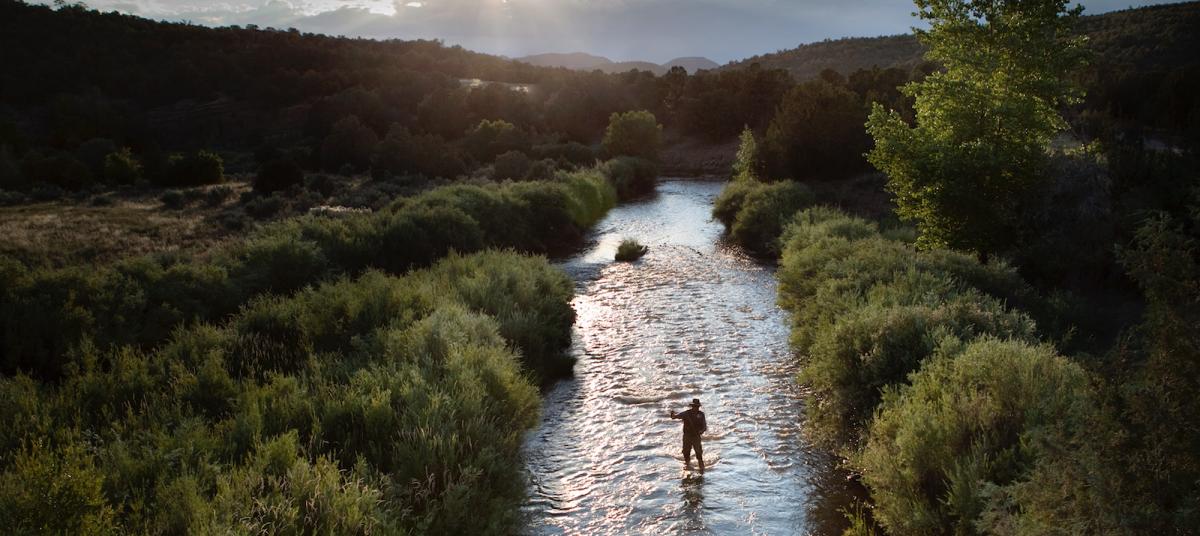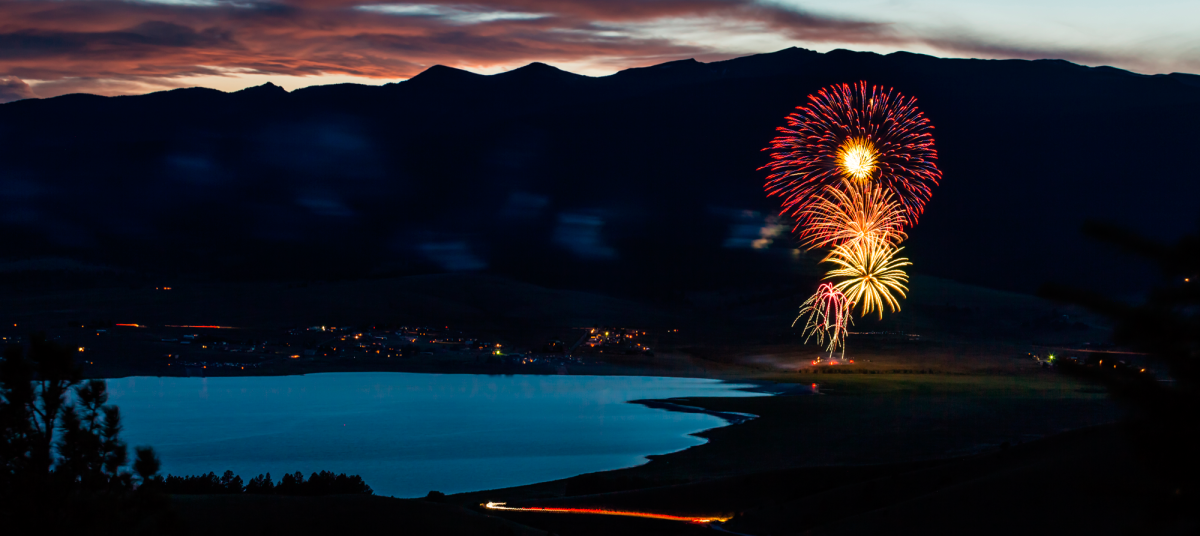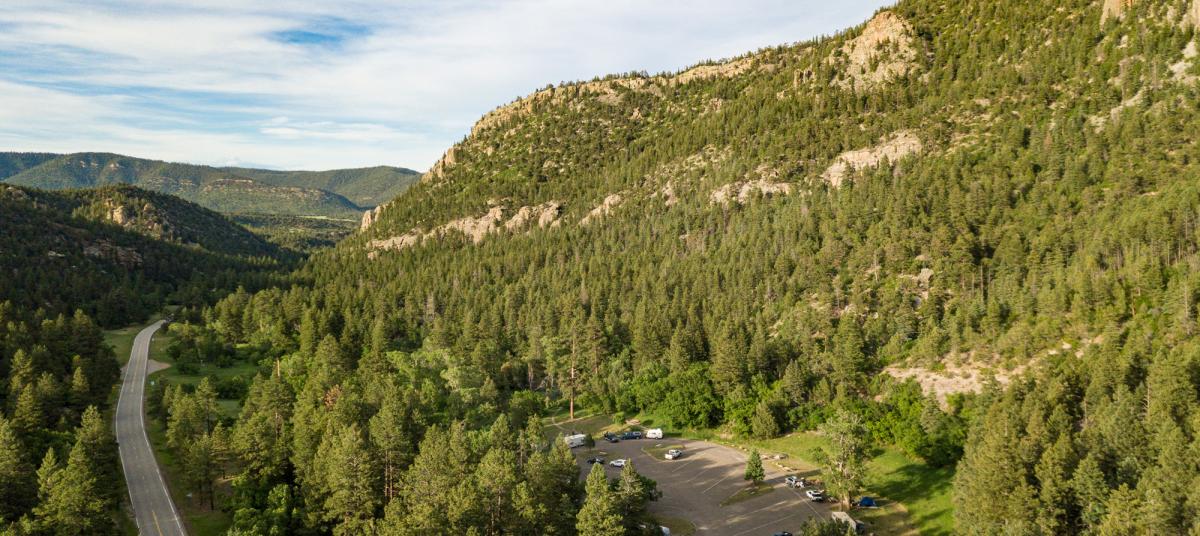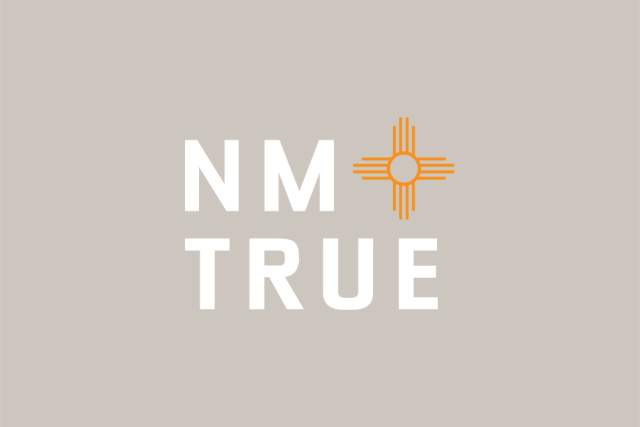Tucked into the magical alpine forests of Northern New Mexico is the charmingly low-key resort town of Eagle Nest. Full of amenities while still keeping its Wild West flair, this small town is the perfect launching point for adventures in any direction. With everything from natural wonders to ghost town hauntings and the added bonus of fewer crowds than some of its neighbors, Eagle Nest is the perfect place to hatch up some plans for adventure. Here are four to get you started.
1. Elizabethtown Ruins

Located less than five miles north of Eagle Nest, Elizabethtown was the first incorporated village in New Mexico. It was a booming mining community roughly 150 years ago and had short-lived success in copper and gold mining. Around 1870, when mining in the area peaked, Elizabethtown had roughly 7,000 residents (depending on who was counting), seven saloons, plus multiple dance halls, schools, stores, and churches: all the makings of a bustling metropolis.
Unfortunately, E-town (as it was called in the late 19th century) was ill-fated due to lack of water despite having a 40-mile-long aqueduct. The winter weather that makes the region such an incredible ski destination now that we have hot cocoa, central heating, and puffy coats was also a major factor in the town’s demise, though not the only unpleasantry with which the locals dealt.
Elizabethtown had plenty of ups and downs throughout its time and met its ultimate demise in 1903 when a fire ravaged the buildings. Today it’s a ghost town in ruins, though its graveyard is still active and impressive, with a view anyone would want to spend eternity gazing out across.
2. Fly Fishing

There’s incredible fishing throughout the region, so be sure to bring your rod, net, and high waters when you visit Eagle Nest. The trout are especially abundant and there are plenty of fish in the lakes, but the rivers also have fantastic pockets worth spending a day or two tossing out a fly to see what bites.
Pike, kokanee salmon, white sucker, smallmouth bass, rainbow trout, brook trout, Rio Grande cutthroat trout, and more can all be found in the waters near Eagle Nest. Experienced rod slingers can head out on the water and give it their best, but if you want an experienced guide to help navigate the terrain of the region, head to the Eagle Nest Fly Shack. The shop is a great resource for sport fishing in the area, offering half- and full-day excursions that include instruction, gear, guidance, and even bait to help you get your first (and second, and third) catch.
3. Eagle Nest Lake State Park

While there are plenty of small lakes to explore in the Eagle Nest area, Eagle Nest Lake is the biggest and most established. One of many places to fish for trout or salmon in the region, the lake is well-stocked with fish, so there will always be something to catch. Cast a line from the banks or go out on a boat (motorized boats are allowed). If you’re feeling adventurous in the winter, try your luck at ice fishing!
But there's more than just fishing and paddling in this state park.
Thanks to its position at just over 8,200 feet in elevation, this alpine lake is situated in a valley below Wheeler Peak, making it a perfect escape from summer heat. There is plenty of lakeside camping and wildlife-watching opportunities—bears, elk, mountain lions, deer, and more than 170 species of birds, from hummingbirds to eagles call the surrounding mountains home. There is also short 1.2-mile hiking trail running through the park.
In the winter, cross-country skiing and snowshoeing are popular activities in the area.
4. Cimarron Canyon State Park

While there are plenty of reasons to visit Eagle Nest, a big one is the abundance of waterfalls, and Cimarron Canyon State Park has some of the best in the region. One of the most popular waterfalls is about 1.5 miles down the Clear Creek Trail. It’s a very manageable trek but does get more technical after the falls. The entire route is just over five miles round trip if you continue on.
Another one in Cimarron that's a must-see for waterfall chasers is the impressive, 30-foot high Maverick Falls. The path to the falls is actually a closed Jeep road along US Highway 64, which cuts through the long, narrow state park. You can’t see the falls from the road, but it's quite loud, so follow the sound of water crashing and you will encounter a number of smaller falls before getting to Maverick.
Alpine falls are best observed in the spring when all the snow melts and cascades down the mountainsides. Pack a good sleeping bag and make an outing of it by camping in the park or spend the night in Eagle Nest and treat yourself to a picnic in front of true natural beauty.
There are plenty of places to use as a home base for adventure in and around Eagle Nest. With everything from hotels to cabins to RV parks, find a complete list of accommodations here.
Originally written by RootsRated for New Mexico.

